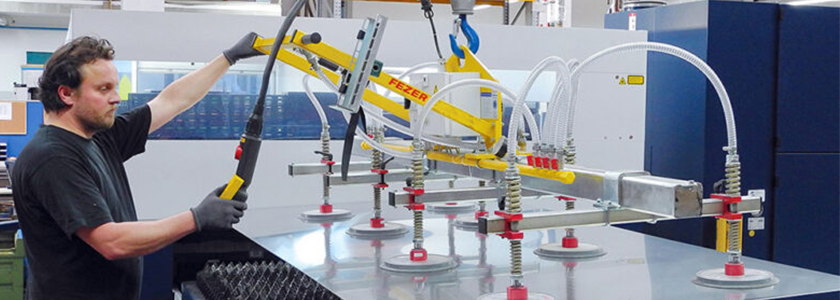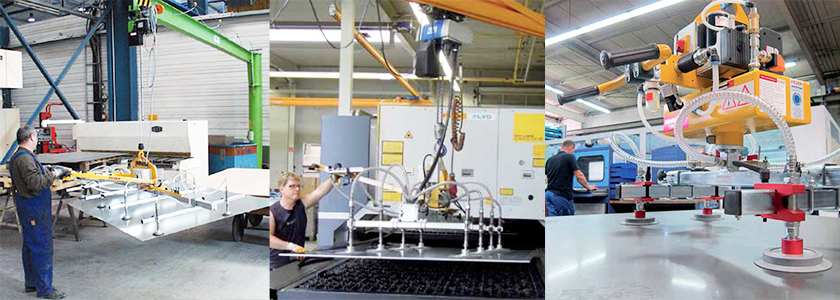A fundamental form of metal used in a wide variety of production industries is sheet metal, which is widely distributed, and therefore a widely handled material.
But as a particularly heavy, smooth and potentially dangerous load, sheet metal material handling can demand purpose-built lifting equipment. And one of the most effective sheet metal lifting devices comes in the form of a vacuum lifter.
The challenges of sheet metal handling
Sheet metal presents a challenge to the factories, warehouses and production lines that deal in it. It’s heavy, which usually means that manual handling is out of the question. It is also smooth on the face yet sharp on the edges, which makes it difficult to grip and secure the material.
Sheet metal also comes in two very different forms – flat pieces or coiled strips – which further complicates handling. But by choosing the right sheet metal handling equipment, such as a vacuum lifter, all the potential problems presented by the material can be solved.
How do vacuum lifters for sheet metal work?
Vacuum lifters are a form of sheet metal material handling equipment in which a firm grip of the load is gained through suction. Rather than using straps, hooks and chains to secure the load, pads form a seal on the sheet metal in which a vacuum is created, similar to what you feel when you place your hand on the end of a vacuum cleaner – though far stronger, as some vacuum lifters can handle loads of up to 50 tonnes.
With no need to manually secure each load, vacuum lifters can greatly enhance the efficiency and productivity of your factory or warehouse, streamlining the movement of sheet metal through your facility. They can also greatly improve safety, reduce manual handling and minimise downtime.
You can even use a vacuum lifting device for sheet metal coils, despite their curved surfaces – simply use a suction cup that matches the curve.
How to use a sheet metal vacuum lifter safely
How do you safely use sheet metal vacuum lifting equipment? Safety processes should always be created based on the unique circumstances and challenges of your warehouse or factory, but in basic terms, a safe lift goes something like this:
- Check conditions: Lifts should not be attempted in excessively hot, cold, wet or windy conditions – less of an issue when lifting indoors.
- Check load weight: Ensure the weight of the load is within the working load limit (WLL) of the sheet metal lifter.
- Check pads and pad spread: Use appropriate suction pads (flat or curved). Ensure they cover an appropriate area and are placed in a stable configuration .
- Conduct a pre-use check: At the start of every day, check suction pads to ensure there are no issues or faults. Conduct deeper checks at appropriate intervals.
- Conduct a pre-lift check: Before lifting, check that the necessary vacuum has been achieved and that the pump is turned off.
- Complete the lift: Lift the load 50mm and check the vacuum gauge to ensure it is stable. Check complete, continue the lift and see it through – never leave suspended sheet metal unattended.
Enabling New Zealand businesses to work smarter, quicker and safer
At Stratalign we have built a reputation as one of New Zealand’s leading experts on sheet metal handling. We’ve spent years supplying Kiwi warehouses and factories with high end sheet metal vacuum lifters that help them work better, safer and more profitably.
With a proven track record and a deep commitment to safety, our lifting equipment experts will help you identify the ideal vacuum lifting solution for your needs.




